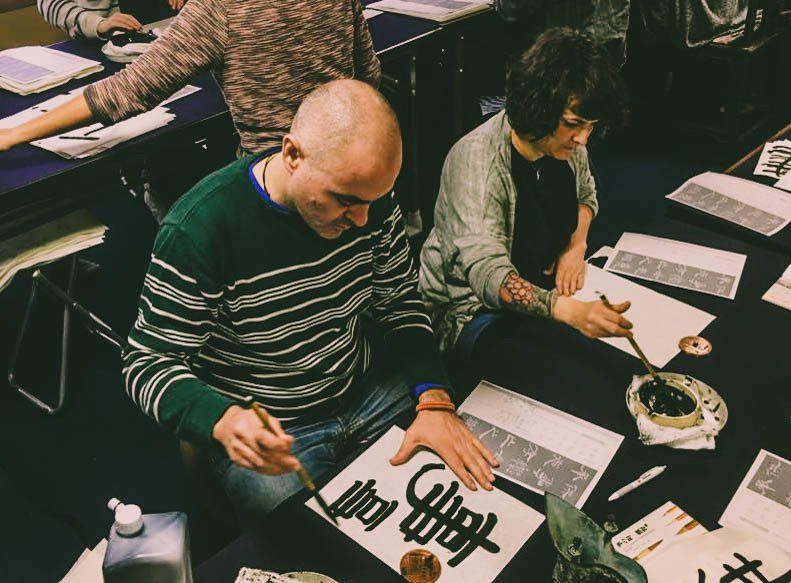The classes continued for several days, always in the morning, to take advantage of the good light and energy of the early hours of the day. And for each of the classes, Hikita Sensei had prepared a new work for us so that we could take a short tour through the study of certain calligraphic styles.
Taking advantage of these breaks, Hikita Sensei gave us all a variety of material so that we could take it to Madrid and continue with everything we had learned. His generosity was so beautiful that he even did not hesitate to take into account those students who could not come with us at that time so that we could take some of the material for them on their behalf. In addition, these instructive breaks served to ask him all kinds of questions about the doubts that arose about the practice, as well as to talk to him about his work. He told us about his grandfather, a painter, who introduced him to the art of sumi-e, and when he talked about it we could see on his face a feeling of eternal gratitude towards him for such a precious legacy. He also showed us many works by his teacher Tonomura Randen, who dedicated his life to both calligraphy and painting. Through their kakejiku, makimono, shikishi, silks… we discovered a talent and style of their own, ranging from transcriptions of classical works to highly creative and colorful pieces, very novel for all of us.
After the kaisho style exercise, it was time for the so-called scribe style or reisho, which was originally used exclusively by officials in ancient China (475 – 221 BC) and which arose mainly from the need to transcribe official documents and help make communication faster, easier and more fluid at that time, causing a significant transformation and abstraction of the tensho style characters that existed at that time, and which managed to simplify the morphology of the characters. Through several photocopies taken from the master's books and using an ancient calligraphy in that style as an example, we were able to learn new strokes, proportions, balances and brush handling, all very different from what we had learned the day before. At break time, a copious and succulent breakfast was waiting for us (and each day was different) to regain strength and continue. Hiroko-san took great care and love to ensure that we tried new flavours, as they were all Japanese dishes, perfectly presented, and always accompanied by tea, coffee and juices of various flavours.











